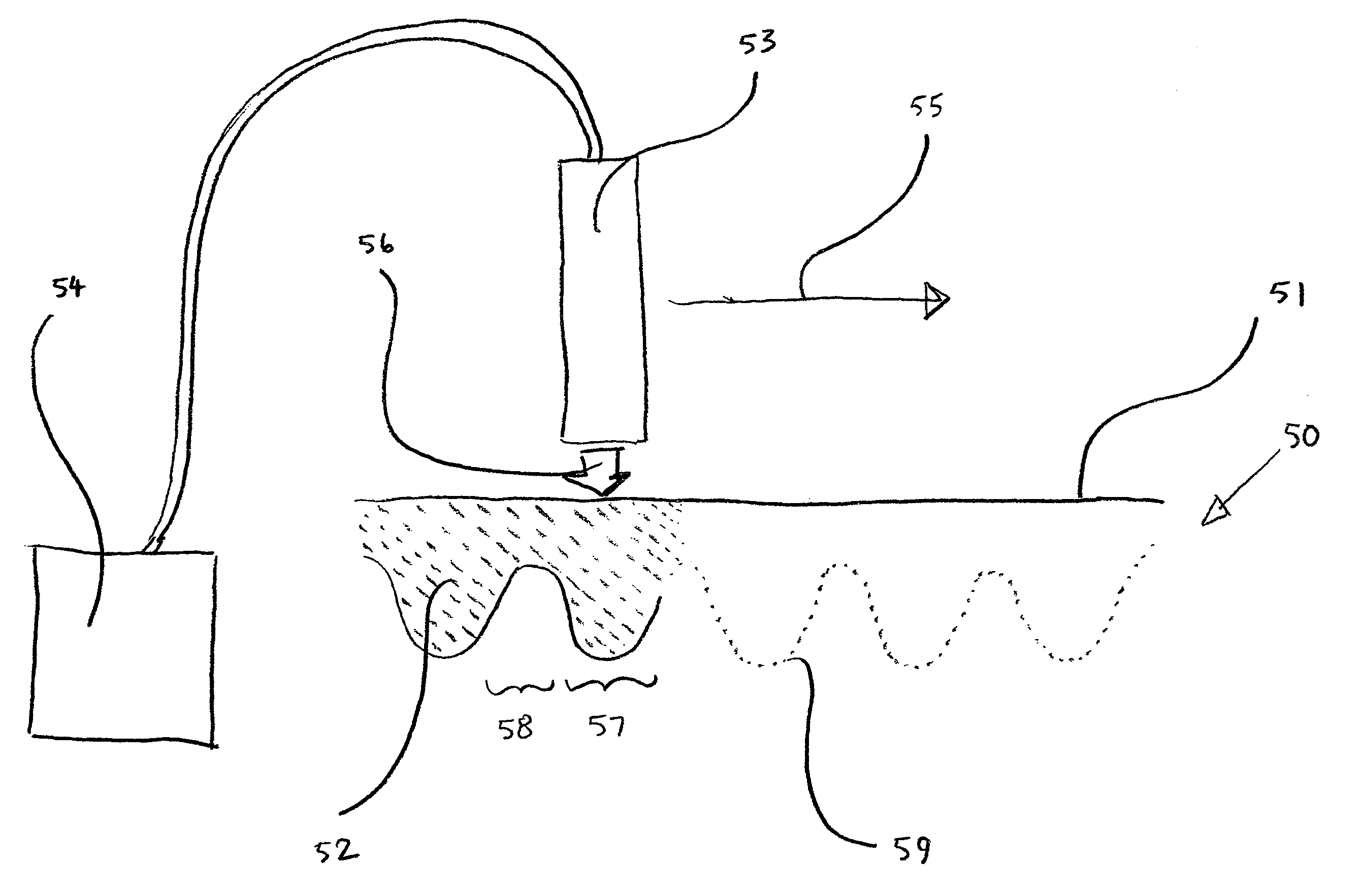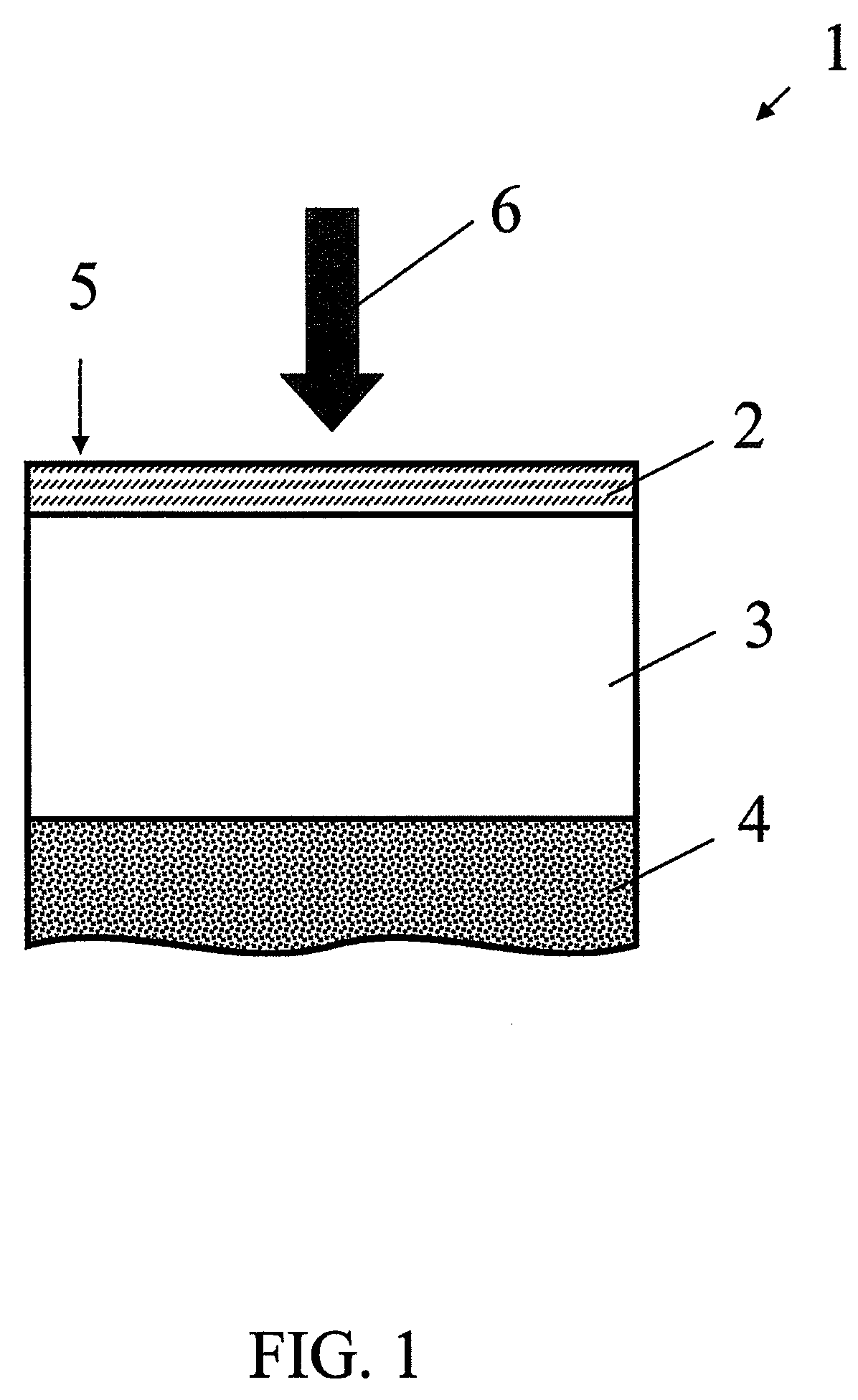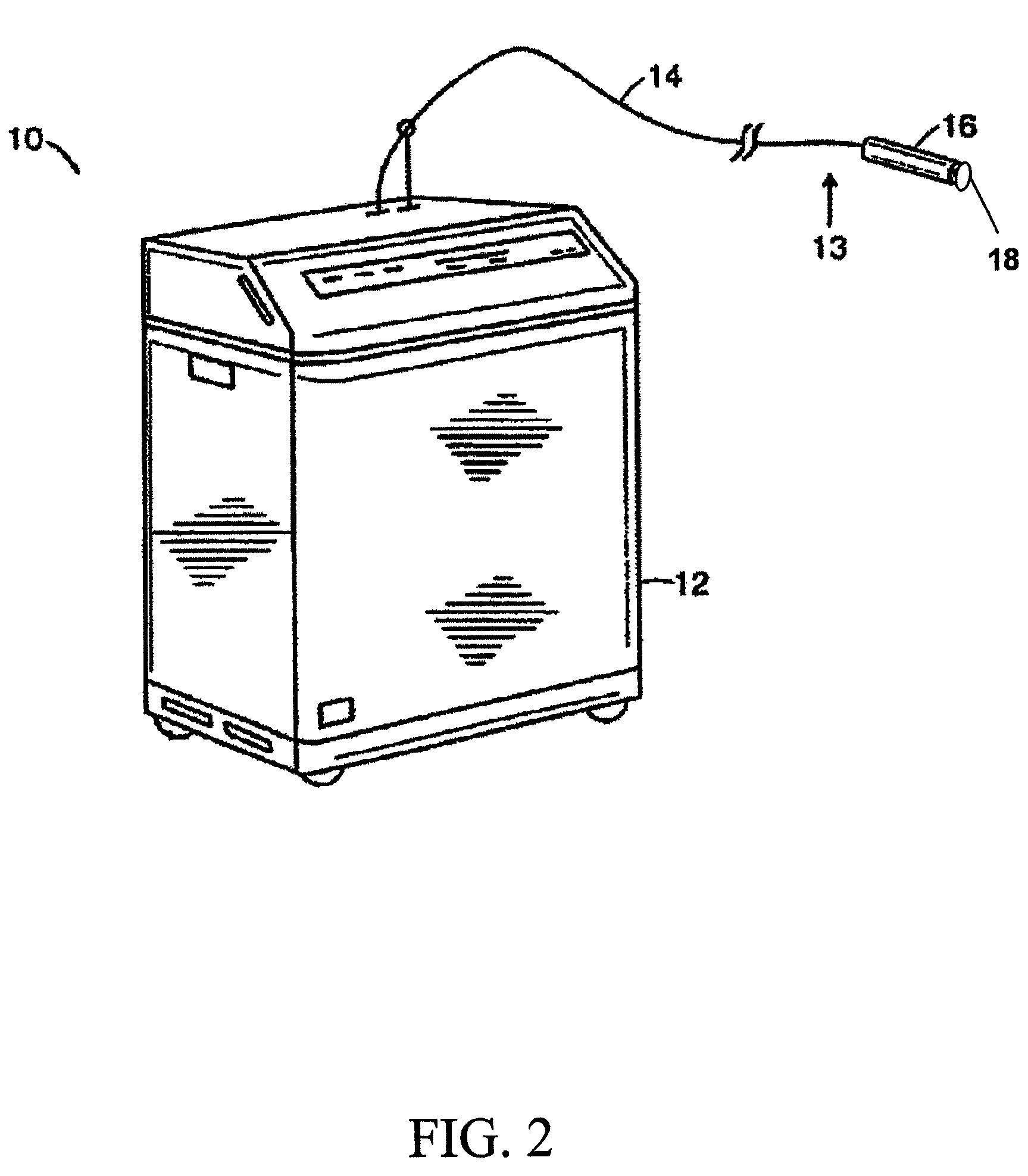Treatment of skin by spatial modulation of thermal heating
a spatial modulation and thermal heating technology, applied in the field of skin treatment using radiation, can solve the problems of ablative resurfacing having undesirable post-treatment side effects, permanent scarring is a possible long-term side effect of ablative resurfacing, and the sub-surface methods are less dramatic than those achieved by ablative resurfacing
- Summary
- Abstract
- Description
- Claims
- Application Information
AI Technical Summary
Benefits of technology
Problems solved by technology
Method used
Image
Examples
Embodiment Construction
[0032]FIG. 1 shows an exemplary cross-section of skin 1 including a region of epidermis 2, a region of dermis 3, a region of subcutaneous tissue 4, and a surface of the skin 5. In one embodiment, the skin 1 can be a region of human skin with wrinkles. A beam of radiation 6 can be delivered to the skin 1 to treat at least a region of skin, including a region of epidermis 2 and / or a region of dermis 3. Skin treatments can include skin rejuvenation and treatments for wrinkles, vessels, pigmentation, scarring, and acne.
[0033]A therapeutic injury can be induced with electromagnetic radiation in the visible to infrared spectral region. A wavelength of light that penetrates into at least a portion of skin can be used. Chromophores can include blood (e.g., oxyhemoglobin and deoxyhemoglobin), collagen, melanin, fatty tissue, and water. Light sources can include lasers, light emitting diodes, or an incoherent source, and can be either pulsed or continuous. In one embodiment, a light source ca...
PUM
 Login to View More
Login to View More Abstract
Description
Claims
Application Information
 Login to View More
Login to View More - R&D
- Intellectual Property
- Life Sciences
- Materials
- Tech Scout
- Unparalleled Data Quality
- Higher Quality Content
- 60% Fewer Hallucinations
Browse by: Latest US Patents, China's latest patents, Technical Efficacy Thesaurus, Application Domain, Technology Topic, Popular Technical Reports.
© 2025 PatSnap. All rights reserved.Legal|Privacy policy|Modern Slavery Act Transparency Statement|Sitemap|About US| Contact US: help@patsnap.com



